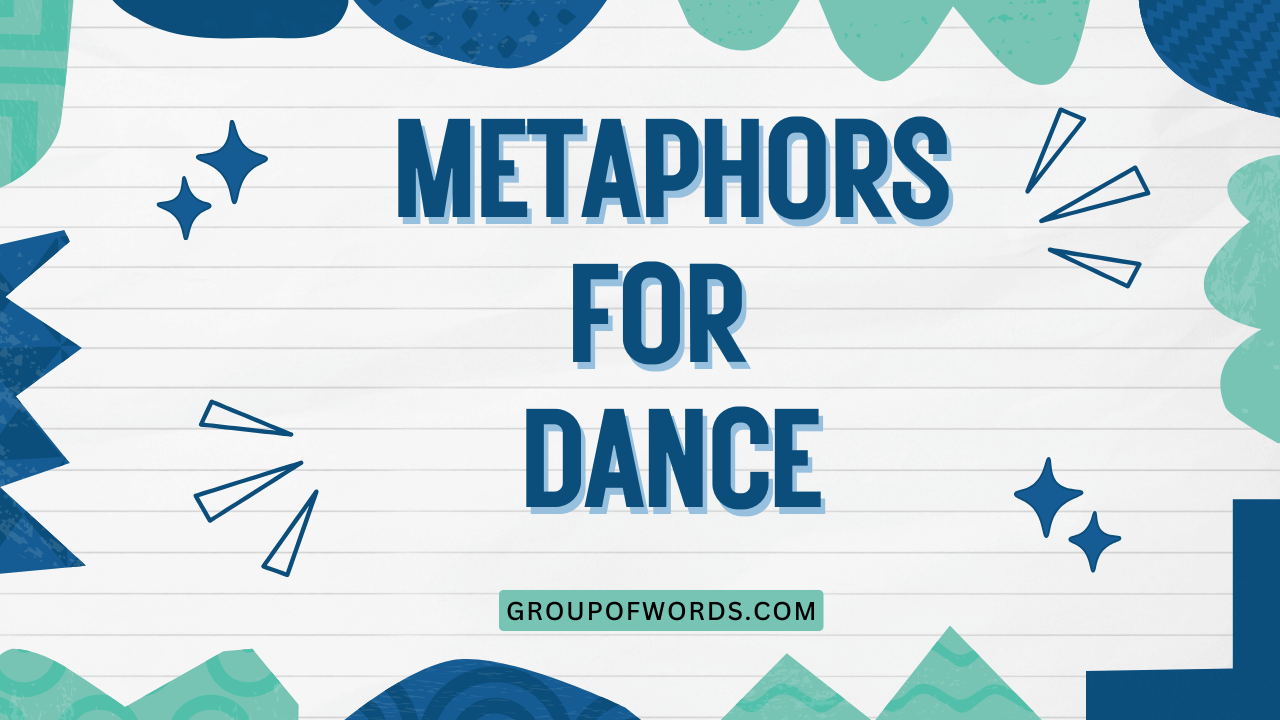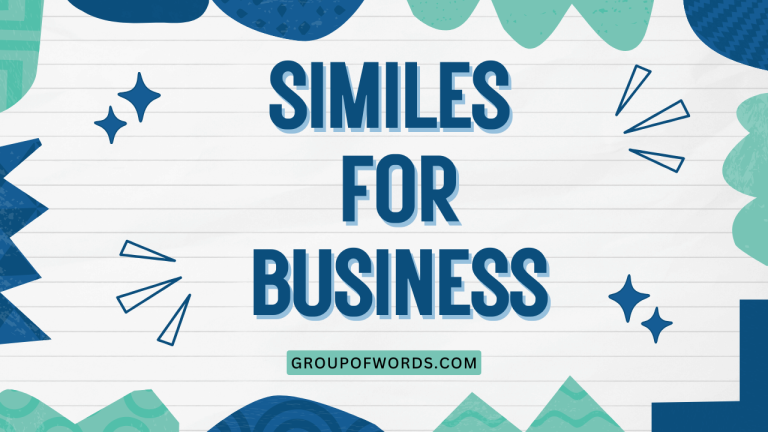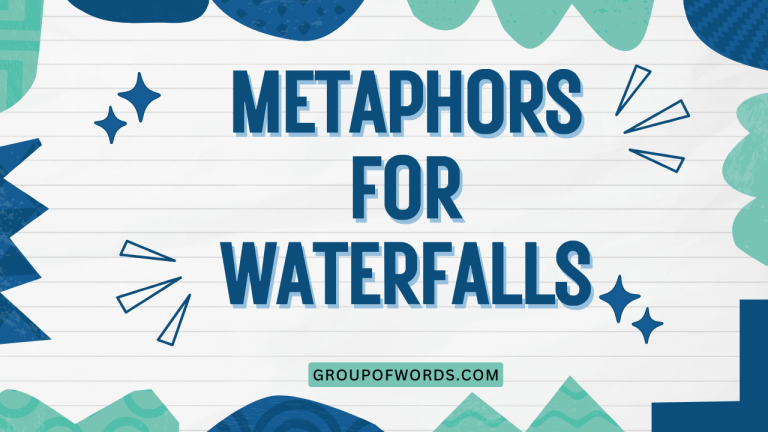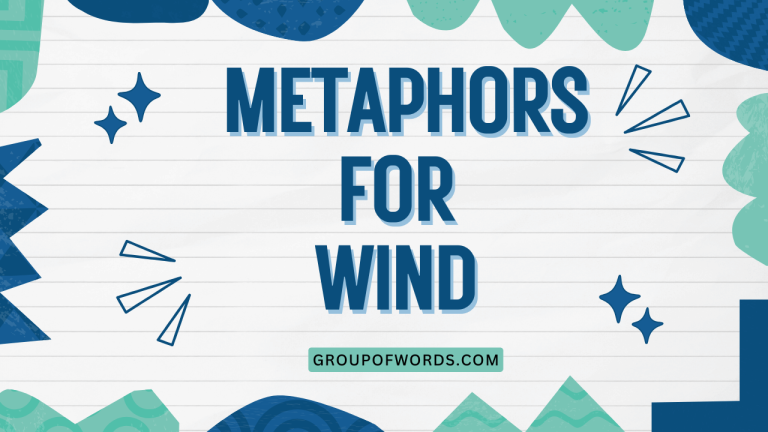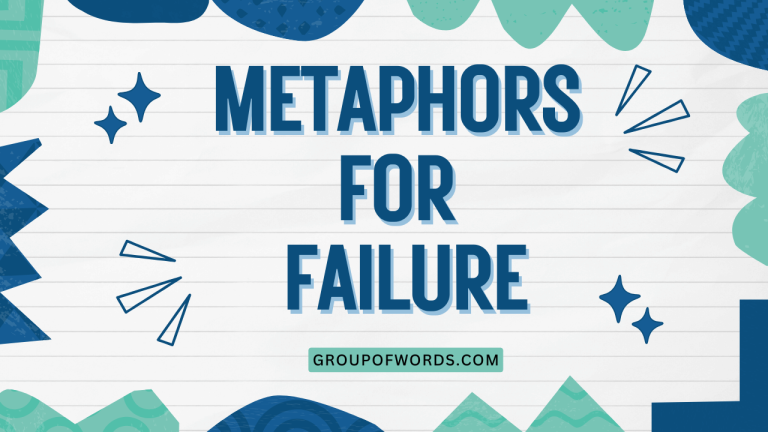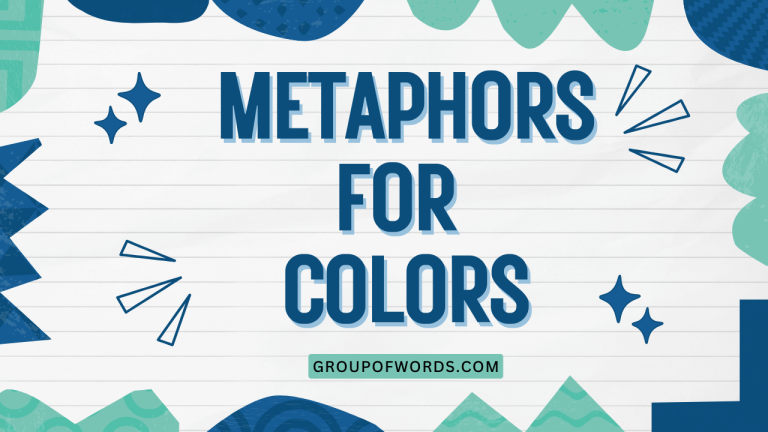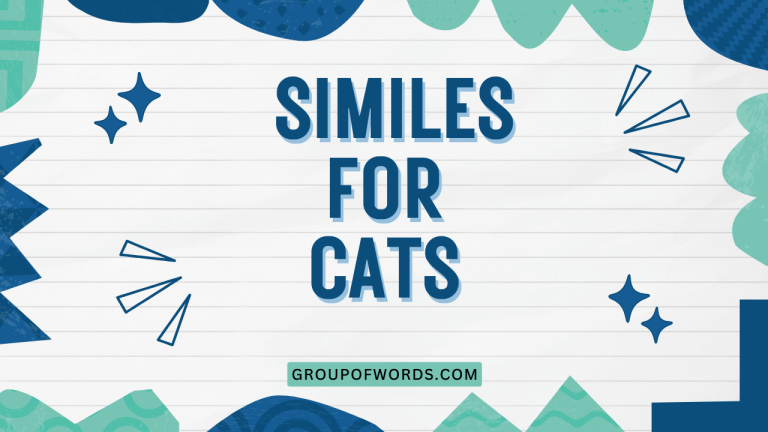Dancing with Words: Exploring Metaphors for Dance
Dance, a universal language expressed through movement, often transcends mere physical activity. To truly capture its essence, we turn to metaphors—figures of speech that allow us to understand and describe dance in richer, more evocative ways.
Understanding metaphors for dance not only deepens our appreciation of the art form but also enhances our grasp of figurative language in English. This article is designed for English language learners, dance enthusiasts, and anyone interested in exploring the intersection of language and art.
Table of Contents
- Introduction
- Definition of Metaphor and Its Application to Dance
- Structural Breakdown of Dance Metaphors
- Types and Categories of Dance Metaphors
- Examples of Metaphors for Dance
- Usage Rules for Metaphors in Describing Dance
- Common Mistakes When Using Dance Metaphors
- Practice Exercises
- Advanced Topics in Dance Metaphors
- Frequently Asked Questions
- Conclusion
Introduction
Metaphors are powerful tools in language, allowing us to understand abstract concepts by relating them to more concrete ones. In the context of dance, metaphors are particularly useful in conveying the nuances of movement, emotion, and artistic expression that go beyond simple descriptions.
This article delves into the fascinating world of metaphors for dance, providing a comprehensive guide to their types, usage, and interpretation. By the end of this article, you will be able to identify, analyze, and effectively use metaphors to describe and appreciate dance in all its forms.
Definition of Metaphor and Its Application to Dance
A metaphor is a figure of speech that directly compares two unrelated things without using “like” or “as.” It asserts that one thing *is* another, implying a shared quality or characteristic. The purpose of a metaphor is to create a vivid image, evoke emotion, or provide a new understanding of a concept. For example, saying “He is a lion” implies that he possesses qualities of a lion, such as courage and strength.
When applied to dance, metaphors help us describe the intangible aspects of movement, such as its fluidity, power, or emotional impact. Instead of simply stating that a dancer moved gracefully, we might say, “She flowed across the stage like water,” using a metaphor to convey the smoothness and ease of her movements.
Metaphors enrich our understanding and appreciation of dance by connecting it to our broader experiences and perceptions.
Structural Breakdown of Dance Metaphors
A metaphor consists of two main parts: the tenor and the vehicle. The tenor is the subject being described (in this case, dance or a specific movement), and the vehicle is the object or concept to which the tenor is being compared. The connection between the tenor and vehicle is the ground, which represents the shared characteristics or qualities that make the metaphor meaningful.
For instance, in the metaphor “His dance was a storm,” the tenor is “his dance,” and the vehicle is “a storm.” The ground might be the intensity, power, and unpredictability shared by both the dance and the storm. Understanding these components helps us analyze and interpret metaphors effectively.
To further break down the structure, consider the following elements that contribute to the effectiveness of a dance metaphor:
- Imagery: The metaphor should create a clear and vivid mental image.
- Emotion: It should evoke a specific feeling or emotion.
- Relevance: The connection between the dance and the metaphor should be logical and meaningful.
- Originality: A fresh and unique metaphor can be more impactful than a cliché.
Types and Categories of Dance Metaphors
Dance metaphors can be categorized based on the types of concepts or images they draw upon. Here are some common categories:
Elemental Metaphors
These metaphors use elements like fire, water, air, and earth to describe dance. They often convey qualities like energy, fluidity, stability, or freedom.
Animalistic Metaphors
These metaphors compare dancers or movements to animals, highlighting traits like grace, power, agility, or ferocity.
Emotional Metaphors
These metaphors use emotions like joy, sorrow, anger, or peace to describe the feeling conveyed by the dance.
Nature Metaphors
These metaphors draw on natural phenomena like mountains, rivers, trees, or flowers to describe the form, growth, or beauty of the dance.
Object Metaphors
These metaphors use inanimate objects like machines, weapons, or tools to describe the precision, force, or function of the dance.
Examples of Metaphors for Dance
Below are several tables providing examples of different types of metaphors used to describe dance. Each table focuses on a specific category, offering a range of examples to illustrate how these metaphors can be used effectively.
The following table focuses on elemental metaphors. These metaphors use the elements of fire, water, air, and earth.
They often convey qualities like energy, fluidity, stability, or freedom.
| Metaphor | Interpretation |
|---|---|
| Her movements were liquid fire. | Her movements were passionate and energetic, yet fluid and graceful. |
| He danced with the force of a tidal wave. | His dance was powerful and overwhelming. |
| The dancers floated like air. | The dancers moved with lightness and ease. |
| Their steps were as solid as the earth beneath them. | Their movements were grounded and stable. |
| The dance was a whirlwind of emotion. | The dance was chaotic and intense, filled with a range of feelings. |
| She moved like a gentle stream. | Her movements were smooth, calm, and peaceful. |
| His leaps were like explosions of energy. | His jumps were powerful and sudden bursts of movement. |
| The dancers were as light as feathers in the wind. | The dancers moved with incredible lightness and grace. |
| Their connection was as strong as bedrock. | Their partnership was solid, reliable, and unshakeable. |
| The performance ignited a fire in the audience. | The performance sparked passion and excitement in the viewers. |
| His dance was a raging inferno. | His dance was intensely passionate and energetic. |
| She flowed across the stage like a river. | Her movements were smooth, continuous, and graceful. |
| They moved with the freedom of the open sky. | Their movements were unrestrained and expressive. |
| His presence was as grounding as the earth itself. | His presence provided stability and a sense of calm. |
| The music and dance created a tempest of feeling. | The combination of music and dance stirred up intense emotions. |
| She danced with the grace of a raindrop. | Her movements were delicate, pure, and beautiful. |
| His energy crackled like lightning. | His energy was intense, sudden, and electrifying. |
| They floated through the air like dandelion seeds. | Their movements were light, airy, and effortless. |
| Their bond was as deep as the earth’s core. | Their connection was profound, lasting, and unbreakable. |
| The performance was a volcanic eruption of talent. | The performance showcased a sudden and powerful display of skill. |
| Her steps were like sparks flying from a flame. | Her movements were quick, bright, and captivating. |
| He navigated the stage like a boat on water. | He moved through the space with skill and precision. |
| The dancers were lifted by an invisible wind. | The dancers appeared to be effortlessly raised. |
| Their foundation was as firm as a mountain. | Their technique and partnership were exceptionally strong. |
| The dance built into a roaring blaze. | The dance grew in intensity and passion. |
The table below showcases animalistic metaphors. These metaphors compare dancers or movements to animals, highlighting traits like grace, power, agility, or ferocity.
| Metaphor | Interpretation |
|---|---|
| She moved like a panther, sleek and powerful. | Her movements were graceful, strong, and controlled. |
| He leaped like a gazelle, effortlessly soaring through the air. | His jumps were high, light, and graceful. |
| The dancers swirled like a school of fish. | The dancers moved together in a fluid, coordinated manner. |
| His movements were as deliberate as a stalking tiger. | His movements were calculated and focused, conveying a sense of danger. |
| She danced with the elegance of a swan. | Her dance was graceful, beautiful, and refined. |
| He strutted across the stage like a peacock. | He moved with pride and showmanship. |
| The dancers fluttered like butterflies. | The dancers moved with delicate and fleeting movements. |
| His strength was like that of a bear. | His strength was raw, powerful, and imposing. |
| She soared like an eagle. | She moved with freedom, confidence, and mastery. |
| He slithered across the floor like a snake. | He moved with sinuous and fluid movements. |
| She pounced like a lioness. | Her movements were assertive, quick, and powerful. |
| He hopped like a frog. | His movements were quick, energetic, and playful. |
| The dancers mimicked the flight of birds. | The dancers imitated the movements of birds in flight. |
| His intensity was as fierce as a wolf’s. | His intensity was strong, unwavering, and primal. |
| She moved with the delicate precision of a hummingbird. | Her movements were quick, precise, and graceful. |
| He charged like a rhino. | His movements were forceful, direct, and unstoppable. |
| The dancers chirped and twirled like sparrows. | The dancers moved with lightness, energy, and joy. |
| His presence was commanding, like that of an alpha. | His presence was dominant, authoritative, and respected. |
| She glided like a dolphin. | Her movements were smooth, playful, and intelligent. |
| He lumbered like an elephant. | His movements were heavy, deliberate, and powerful. |
| The corps de ballet moved as one, like a flock of birds. | The group of dancers moved in perfect synchronicity and harmony. |
| Her solo was as captivating as the call of a siren. | Her solo was alluring, mesmerizing, and unforgettable. |
| He stalked the stage like a predator. | He moved with a sense of purpose, control, and latent danger. |
| She danced with the untamed spirit of a wild horse. | Her dance was free, expressive, and full of energy. |
| His movements were as precise and efficient as an ant. | His movements were deliberate, organized, and purposeful. |
The following table provides examples of emotional metaphors. These metaphors use emotions like joy, sorrow, anger, or peace to describe the feeling conveyed by the dance.
| Metaphor | Interpretation |
|---|---|
| The dance was a tapestry of joy and sorrow. | The dance expressed a complex mix of happy and sad emotions. |
| Her movements were a whisper of hope. | Her movements conveyed a sense of optimism and possibility. |
| His dance was a scream of defiance. | His dance expressed strong resistance and rebellion. |
| The dancers embodied pure bliss. | The dancers radiated happiness and contentment. |
| Her solo was a lament for lost love. | Her solo expressed deep sorrow and mourning. |
| The performance was a celebration of life. | The performance celebrated the joys and experiences of living. |
| His anger was palpable in every step. | His anger was evident and intense in his movements. |
| She danced with unwavering determination. | She danced with strong resolve and commitment. |
| The dancers evoked a sense of nostalgia. | The dancers stirred up feelings of longing for the past. |
| His vulnerability was laid bare on the stage. | His emotional openness was evident and exposed. |
| Her dance was a beacon of hope in dark times. | Her dance offered a sense of optimism and guidance during difficult periods. |
| His movements were a symphony of sadness. | His movements expressed a deep and complex range of sorrowful emotions. |
| The performance was an explosion of pure joy. | The performance was filled with overwhelming happiness and excitement. |
| Her expression was a mask of stoicism. | Her expression hid her true emotions with a sense of control and reserve. |
| His dance was a battle against despair. | His dance conveyed a struggle to overcome hopelessness. |
| The dancers radiated an aura of tranquility. | The dancers projected a sense of peace and calmness. |
| Her longing was etched into every gesture. | Her yearning was visible in every movement she made. |
| His passion ignited the stage. | His intense emotion and energy captivated the audience. |
| The dancers conveyed a sense of shared grief. | The dancers expressed a collective feeling of sorrow and loss. |
| Her dance was a quiet prayer. | Her dance was a deeply personal and spiritual expression. |
| His movements were a torrent of rage. | His movements expressed intense anger and fury. |
| She embodied pure exhilaration. | She radiated joy, excitement, and enthusiasm. |
| The dance was a mirror reflecting the audience’s own emotions. | The dance resonated with the audience’s feelings and experiences. |
| His presence brought a sense of solace to the stage. | His presence provided comfort, peace, and reassurance. |
| Her dance was a testament to resilience. | Her dance demonstrated strength and ability to recover from adversity. |
This table presents nature-based metaphors. These metaphors draw on natural phenomena like mountains, rivers, trees, or flowers to describe the form, growth, or beauty of the dance.
| Metaphor | Interpretation |
|---|---|
| The dancers swayed like willow trees in the wind. | The dancers moved with graceful and gentle flexibility. |
| His leaps were as high as mountain peaks. | His jumps were impressively high and powerful. |
| The dance unfolded like the petals of a flower. | The dance revealed itself gradually and beautifully. |
| Her movements were as fluid as a flowing river. | Her movements were smooth, continuous, and graceful. |
| The dancers stood as strong as ancient oaks. | The dancers were resilient, stable, and unwavering. |
| His energy was a sunbeam, warming the stage. | His energy was bright, positive, and uplifting. |
| She moved like moonlight on water. | Her movements were ethereal, delicate, and beautiful. |
| The dancers were a field of wildflowers in bloom. | The dancers were vibrant, colorful, and full of life. |
| His presence was as grounding as the earth beneath their feet. | His presence provided stability, strength, and reassurance. |
| She danced with the freedom of a bird in flight. | Her dance was unrestrained, expressive, and joyful. |
| His strength was as solid as a granite cliff. | His strength was unyielding, formidable, and dependable. |
| She flowed across the stage like a gentle waterfall. | Her movements were smooth, continuous, and effortlessly graceful. |
| The dancers moved as one, like a murmuration of starlings. | The dancers moved together in perfect synchronicity and harmony. |
| His passion was an erupting volcano. | His emotion was intense, powerful, and overwhelming. |
| She danced with the quiet strength of a desert cactus. | Her dance was resilient, enduring, and subtly powerful. |
| His movements were like the rustling of leaves in the wind. | His movements were subtle, delicate, and evocative. |
| The dancers bloomed like flowers in spring. | The dancers emerged and flourished with beauty and grace. |
| His presence was a sheltering tree in a storm. | His presence provided comfort, safety, and protection. |
| She moved with the grace of a mountain stream. | Her movements were pure, clear, and naturally beautiful. |
| His dance was a forest of untold stories. | His dance was rich with narrative, depth, and hidden meanings. |
| She floated like a cloud across the sky. | Her movements were light, airy, and seemingly effortless. |
| The dancers grew together like intertwined vines. | The dancers developed their skills and partnership in close synergy. |
| His energy was a tidal wave, sweeping the audience away. | His energy was overwhelming, powerful, and captivating. |
| She danced with the resilience of a sunflower. | Her dance was cheerful, strong, and always facing the light. |
| His movements were as timeless as the ocean. | His movements were classic, enduring, and infinitely expressive. |
The final table presents metaphors related to objects. These metaphors use inanimate objects like machines, weapons, or tools to describe the precision, force, or function of the dance.
| Metaphor | Interpretation |
|---|---|
| The dancers moved with the precision of a well-oiled machine. | The dancers’ movements were perfectly coordinated and efficient. |
| His leaps were like catapults, launching him into the air. | His jumps were powerful and projected him forcefully upward. |
| Her movements were sharp as knives. | Her movements were precise, cutting, and impactful. |
| The dance was a clockwork mechanism, perfectly timed. | The dance was meticulously choreographed and executed with precision. |
| His strength was like a steel rod. | His strength was unyielding, durable, and unbreakable. |
| Her steps were light as feathers. | Her steps were delicate, graceful, and effortless. |
| The dancers moved like synchronized robots. | The dancers’ movements were perfectly coordinated and uniform. |
| His energy was a live wire. | His energy was intense, electrifying, and potentially dangerous. |
| She spun like a top. | She rotated quickly and smoothly. |
| His movements were like the striking of a hammer. | His movements were forceful, direct, and impactful. |
| The dancers were interconnected like gears in a machine. | The dancers relied on each other and worked together seamlessly. |
| His presence was a spotlight, illuminating the stage. | His presence drew attention and highlighted the performance. |
| Her dance was a bridge, connecting different cultures. | Her dance served as a means of communication and understanding between diverse groups. |
| His movements were as precise as the hands of a clock. | His movements were accurate, measured, and perfectly timed. |
| The dancers were a tapestry of interwoven stories. | The dancers created a rich and complex narrative together. |
| His strength was like a fortress. | His strength was imposing, resilient, and impenetrable. |
| Her dance was a kaleidoscope, constantly shifting and changing. | Her dance was visually dynamic, varied, and captivating. |
| His leaps were like rockets, propelling him upwards. | His jumps were powerful, explosive, and launched him high into the air. |
| The dancers moved with the grace of falling dominoes. | The dancers moved in a fluid, sequential, and interconnected manner. |
| His dance was a mirror, reflecting the audience’s emotions. | His dance resonated with the audience’s feelings and experiences. |
| Her movements were like the ticking of a clock. | Her movements were precise, rhythmic, and consistent. |
| His presence was a magnet, drawing the audience’s attention. | His presence was captivating and irresistible. |
| The dancers were synchronized like the swinging of pendulums. | The dancers moved in perfect unison and harmony. |
| His energy was a spark, igniting the audience’s enthusiasm. | His energy was infectious and generated excitement. |
| Her dance was a compass, guiding the audience through a journey. | Her dance provided direction, purpose, and meaning. |
Usage Rules for Metaphors in Describing Dance
While metaphors can greatly enrich our descriptions of dance, it’s important to use them effectively and appropriately. Here are some guidelines:
- Be clear: The connection between the tenor and the vehicle should be logical and understandable. Avoid metaphors that are too obscure or confusing.
- Be relevant: The metaphor should accurately reflect the qualities or characteristics of the dance being described.
- Be original: Strive for fresh and unique metaphors that capture the essence of the dance in a creative way. Avoid clichés and overused expressions.
- Be consistent: Maintain a consistent tone and style throughout your description. Mixing metaphors can create a confusing or jarring effect.
- Be mindful of context: Consider the audience and the purpose of your description. A metaphor that is appropriate for a scholarly analysis might not be suitable for a casual conversation.
Common Mistakes When Using Dance Metaphors
Here are some common mistakes to avoid when using metaphors for dance:
| Incorrect | Correct | Explanation |
|---|---|---|
| The dance was a cold sun. | The dance was a distant star. | The original metaphor is contradictory – the sun is known for warmth, not coldness. |
| He moved like a brick. | He moved like a statue. | The original metaphor is not evocative, as bricks are static. |
| She was a whirlwind and a gentle breeze. | She was a whirlwind of energy. | Mixing metaphors can create confusion. Choose a single, consistent image. |
| The dance was a very good dance. | The dance was a captivating dream. | Avoid stating the obvious; use metaphors to add depth and imagery. |
| His dance was like a dance. | His dance was a powerful narrative. | The original statement is redundant; metaphors should offer a new perspective. |
| She danced with the grace of a fish on land. | She danced with the grace of a water nymph. | The original metaphor is illogical; fish are not graceful on land. |
| His movements were as fast as slow. | His movements were as quick as lightning. | Avoid contradictory or nonsensical comparisons. |
| The dance was a chair. | The dance was a solid foundation. | Ensure the comparison is relevant and meaningful. |
| She was a symphony of colors and sounds. | She was a symphony of motion. | Ensure the metaphor aligns with the context of dance. |
| His dance was like life. | His dance was a journey of self-discovery. | Avoid overly broad comparisons that lack specificity. |
Practice Exercises
Test your understanding of metaphors for dance with these exercises:
| Question | Answer |
|---|---|
| 1. Complete the metaphor: Her dance was a ________ of emotion. | 1. Her dance was a flood of emotion. |
| 2. Identify the vehicle in the metaphor: His leaps were rockets. | 2. The vehicle is rockets. |
| 3. Rewrite the sentence using a metaphor: She moved gracefully. | 3. She floated like a swan. |
| 4. What type of metaphor is this? The dance was a whisper of hope. | 4. Emotional metaphor. |
| 5. Correct the mistake: The dance was a hot ice cube. | 5. The dance was a burning flame. |
| 6. Complete the metaphor: His strength was like a _______. | 6. His strength was like a tower. |
| 7. Identify the tenor in the metaphor: The dancers swirled like a school of fish. | 7. The tenor is the dancers. |
| 8. Rewrite the sentence using a metaphor: He moved powerfully. | 8. He moved like a roaring lion. |
| 9. What type of metaphor is this? Her movements were as fluid as a flowing river. | 9. Nature metaphor. |
| 10. Correct the mistake: The dance was a sweet lemon. | 10. The dance was a burst of sunshine. |
| 11. Complete the metaphor: She moved with the precision of a ________. | 11. She moved with the precision of a surgeon. |
| 12. Identify the vehicle in the metaphor: His presence was a spotlight. | 12. The vehicle is spotlight. |
| 13. Rewrite the sentence using a metaphor: The dancers were perfectly coordinated. | 13. The dancers were synchronized gears. |
| 14. What type of metaphor is this? His dance was a scream of defiance. | 14. Emotional metaphor. |
| 15. Correct the mistake: The dance was a silent noise. | 15. The dance was a powerful silence. |
| 16. Complete the metaphor: The dancers were as light as ________. | 16. The dancers were as light as feathers. |
| 17. Identify the tenor in the metaphor: Her movements were sharp as knives. | 17. The tenor is her movements. |
| 18. Rewrite the sentence using a metaphor: His energy was intense. | 18. His energy was a bolt of lightning. |
| 19. What type of metaphor is this? The dancers swayed like willow trees in the wind. | 19. Nature metaphor. |
| 20. Correct the mistake: The dance was a square circle. | 20. The dance was an intricate maze. |
Advanced Topics in Dance Metaphors
For advanced learners, consider exploring these more complex aspects of dance metaphors:
- Extended Metaphors: These are metaphors that are developed over several lines or paragraphs, creating a more elaborate and nuanced comparison.
- Mixed Metaphors: The unintentional and often humorous combination of two or more incompatible metaphors. While generally avoided, mixed metaphors can be used deliberately for comedic effect.
- Conceptual Metaphors: These are underlying cognitive structures that shape our understanding of abstract concepts. For example, the conceptual metaphor “ARGUMENT IS WAR” influences how we talk about arguments (e.g., “He attacked my points,” “I defended my position”). Exploring conceptual metaphors can reveal deeper insights into how we perceive dance.
- Cultural Variations: Different cultures may use different metaphors to describe dance, reflecting their unique values, beliefs, and artistic traditions.
Frequently Asked Questions
- What is the difference between a metaphor and a simile?
A metaphor directly equates two things, while a simile compares them using “like” or “as.” For example, “She is a swan” (metaphor) versus “She is like a swan” (simile). Similes are generally less forceful and direct than metaphors.
- Why are metaphors useful in describing dance?
Metaphors help us convey the intangible aspects of dance, such as its emotional impact, fluidity, or power. They allow us to connect dance to our broader experiences and perceptions, enriching our understanding and appreciation of the art form.
- How can I come up with original metaphors for dance?
Pay close attention to the specific qualities of the dance you are describing. Consider the movements, emotions, and overall effect. Then, brainstorm objects, concepts, or images that share similar qualities. Don’t be afraid to experiment and think creatively.
- Is it okay to use clichés when describing dance?
While clichés can be easily understood, they often lack originality and impact. Strive for fresh and unique metaphors that capture the essence of the dance in a more creative way.
- How do I avoid mixing metaphors?
Be mindful of the images and concepts you are using. Ensure that they are consistent and compatible. If you find yourself combining unrelated metaphors, choose the one that best captures the essence of the dance and stick with it.
- Can metaphors be used in all types of writing about dance?
Metaphors can be used in various types of writing about dance, including reviews, analyses, and personal reflections. However, it’s important to consider the audience and the purpose of your writing. Scholarly analyses may require more precise and technical language, while personal reflections may allow for more creative and expressive metaphors.
- How do cultural backgrounds influence the use of metaphors for dance?
Cultural backgrounds significantly shape the metaphors used for dance, as different cultures have unique artistic traditions, values, and beliefs. A metaphor that resonates in one culture may not have the
same meaning or impact in another. For example, a dance described as “flowing water” might evoke different images and emotions in a desert culture compared to a coastal one. Being aware of these cultural nuances is essential for effective communication and appreciation of dance across different contexts.
Conclusion
Metaphors are invaluable tools for describing and understanding dance, allowing us to express the inexpressible and connect with the art form on a deeper level. By understanding the structure, types, and usage rules of dance metaphors, you can enhance your ability to analyze, appreciate, and communicate about dance in all its forms.
Whether you are a dancer, a critic, or simply an enthusiast, mastering the art of metaphorical language will undoubtedly enrich your experience of dance and broaden your understanding of the world around you. So, go forth and dance with words!
